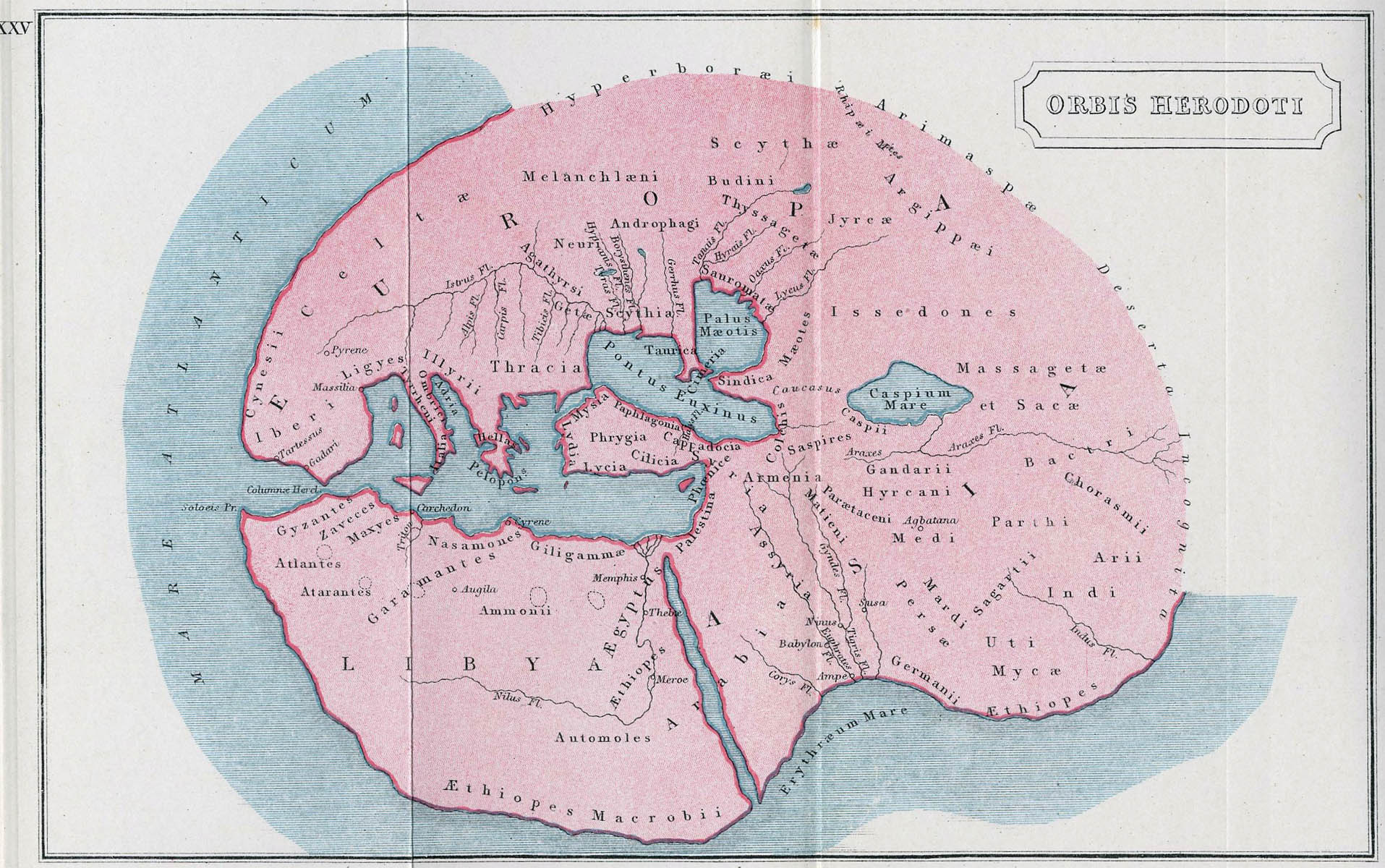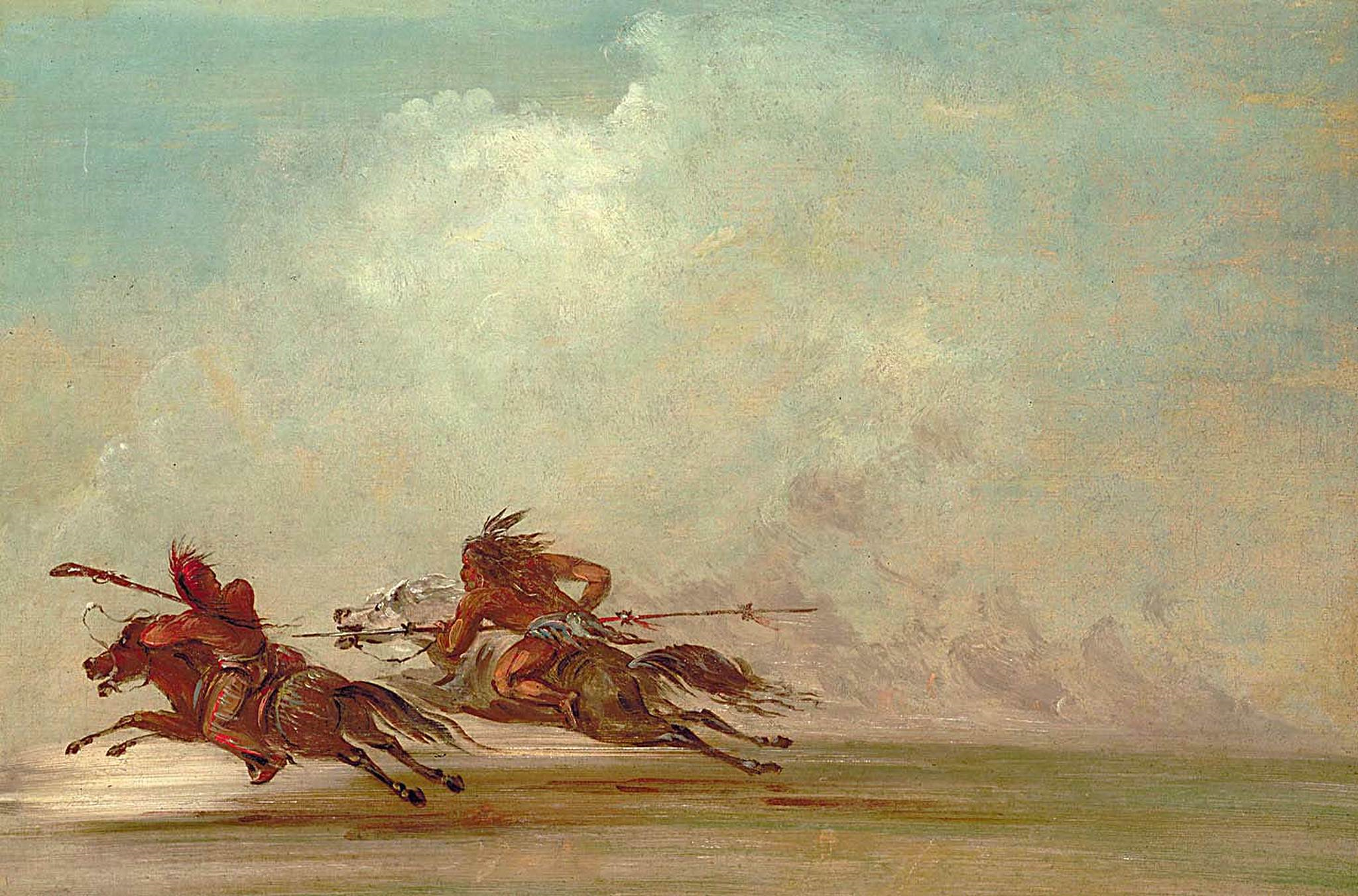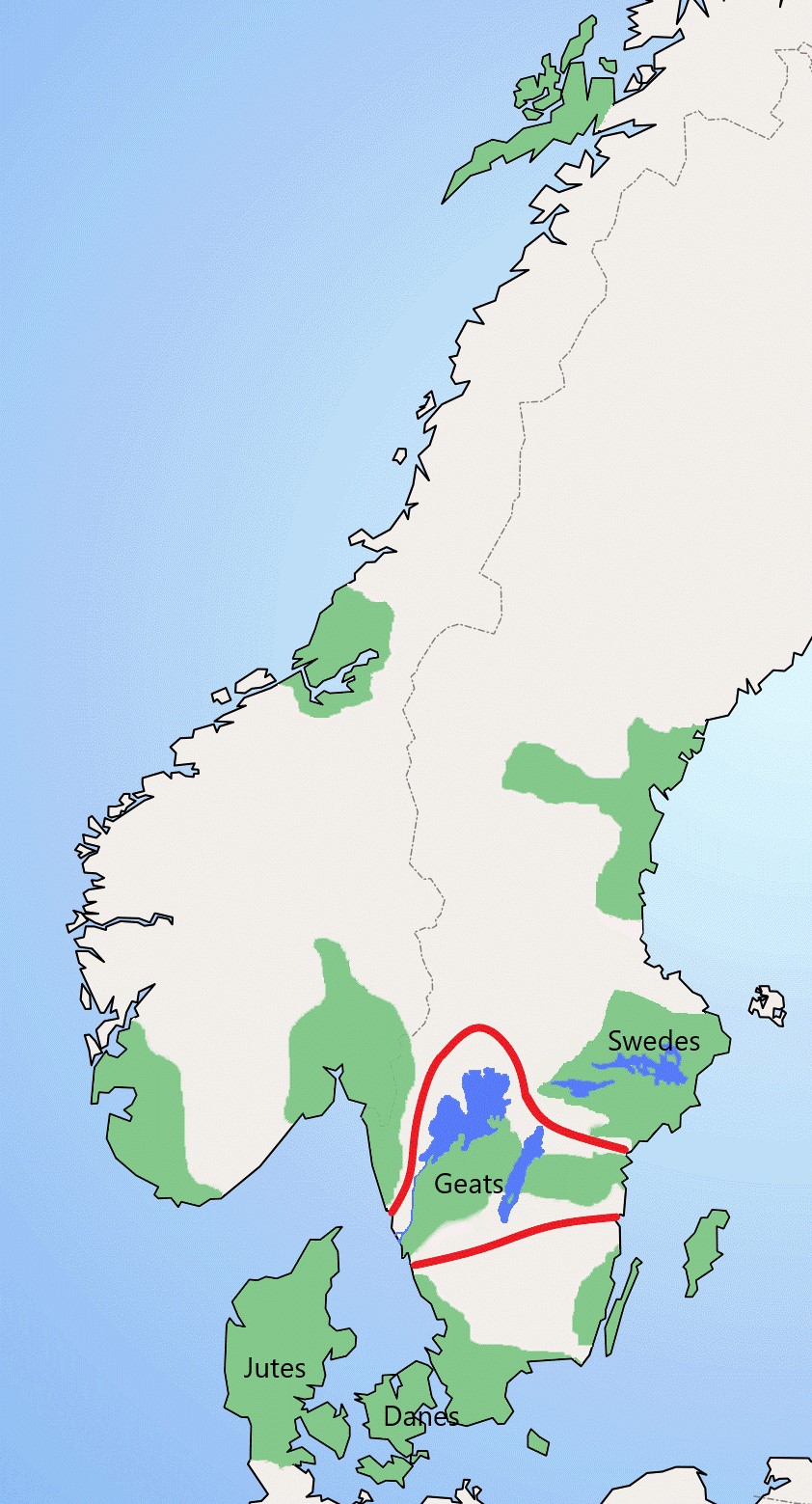|
Thyssagetae
The Thyssagetae () were an ancient tribe described by Herodotus as occupying a district to the north-east of Scythia, separated from the Budini by a "desert" that took seven days to cross.Herodotus. ''Histories'', 4.22.1: "...after the desert, if one inclines somewhat to the east, the Thyssagetae are reached, a numerous nation quite distinct from any other, and living by the chase." The Thyssagetae therefore seem to have occupied the southern end of the Ural Mountains, north of the Caspian Sea. According to the 19th Century archaeologist Sir Ellis Minns, the form of their name suggests that the Thyssagetae spoke an Iranian language, such as Scythian or Sarmatian, like the neighbouring Massagetae (on the north-east shores of the Caspian).Ellis Hovell Minns, (2011; orig. 1903), ''Scythians and Greeks: A Survey of Ancient History and Archaeology on the North Coast of the Euxine from the Danube to the Caucasus'', Cambridge, Cambridge University Press p. 107. The 15th Century ch ... [...More Info...] [...Related Items...] OR: [Wikipedia] [Google] [Baidu] |
Getae
The Getae or Getai ( or , also Getans) were a large nation who inhabited the regions to either side of the Lower Danube in what is today northern Bulgaria and southern Romania, throughout much of Classical Antiquity. The main source of information about the Getae are Greek and Roman chroniclers, who write that the Getae were closely related to the neighbouring Thracians to the south and Dacians to the north. Cassius Dio writes that the Getae are the same people as the Dacians, Getae being the Greek name for the Dacians. Modern scholars continue to debate the details of these relationships. The Getae first appear in historical records as fierce opponents of the Scythian campaign of Darius I, Persian invasion in 513 BC, as described by the early Greek historian Herodotus. They faded out of historical records during the Roman Empire, when many appear to have become Romans, and others north of the Danube were gradually overwhelmed by other peoples moving from the north and east tow ... [...More Info...] [...Related Items...] OR: [Wikipedia] [Google] [Baidu] |
Scythian
The Scythians ( or ) or Scyths (, but note Scytho- () in composition) and sometimes also referred to as the Pontic Scythians, were an ancient Eastern Iranian equestrian nomadic people who had migrated during the 9th to 8th centuries BC from Central Asia to the Pontic Steppe in modern-day Ukraine and Southern Russia, where they remained established from the 7th century BC until the 3rd century BC. Skilled in mounted warfare, the Scythians replaced the Agathyrsi and the Cimmerians as the dominant power on the western Eurasian Steppe in the 8th century BC. In the 7th century BC, the Scythians crossed the Caucasus Mountains and frequently raided West Asia along with the Cimmerians. After being expelled from West Asia by the Medes, the Scythians retreated back into the Pontic Steppe in the 6th century BC, and were later conquered by the Sarmatians in the 3rd to 2nd centuries BC. By the 3rd century AD, last remnants of the Scythians were overwhelmed by the Goths, and by th ... [...More Info...] [...Related Items...] OR: [Wikipedia] [Google] [Baidu] |
Chusovaya River
The Chusovaya () is a river flowing in Perm Krai, Sverdlovsk Oblast and Chelyabinsk Oblast of Russia. A tributary of the Kama, which in turn is a tributary of the Volga, discharges into the Chusovskoy Cove of the Kamsky Reservoir. The river is remarkable in that it originates on the eastern slopes of the Ural Mountains in Asia, crosses the mountains, and mostly runs on their western slopes in Europe. The Chusovaya River is widely used as a source of water. In particular, its water is taken from the Volchikhinsky Reservoir, , to the Verkhneisetsky Reservoir to supply the major city of Yekaterinburg. Fifteen smaller reservoirs are spread over about 150 tributaries of the river. There are numerous metal and coal mines along the Chusovaya, and the river was intensively used to deliver their production to the western Russia. However, industrial navigation nearly halted with the development of railways in the early 20th century. Chusovoy is the major remaining port on the river. Th ... [...More Info...] [...Related Items...] OR: [Wikipedia] [Google] [Baidu] |
Massagetae
The Massagetae or Massageteans, also known as Sakā Tigraxaudā or Orthocorybantians, were an ancient Eastern Iranian Saka people who inhabited the steppes of Central Asia and were part of the wider Scythian cultures. The Massagetae rose to power in the 8th to 7th centuries BCE, when they started a series of events with wide-reaching consequences by expelling the Scythians out of Central Asia and into the Caucasian and Pontic Steppes. The Massagetae are most famous for their queen Tomyris's alleged defeating and killing of Cyrus, the founder of the Persian Achaemenid Empire. The Massagetae declined after the 3rd century BCE, after which they merged with some other tribes to form the Alans, a people who belonged to the larger Sarmatian tribal confederation, and who moved westwards into the Caucasian and European steppes, where they participated in the events of the Migration Period. Names Massagetae The name is the Latin form of ''Massagétai''. The Iranologist Rüdiger S ... [...More Info...] [...Related Items...] OR: [Wikipedia] [Google] [Baidu] |
Orbis Herodoti
Orbis may refer to: Companies * Orbis Business Intelligence, a British private intelligence firm * Orbis Technology, a British bookmaker software company now called OpenBet * Orbis (Polish travel agency), a Polish travel agency, established in 1920 Entertainment * ''Orbis'' (audio drama), a Doctor Who audio play * ''Orbis Pictus'' (film), a 1997 Slovak film Historical * The "Orbis Terrarum", a map of the world created by Marcus Vipsanius Agrippa in 20 A.D. * Orbis, Rhineland-Palatinate, a municipality in the Donnersbergkreis district, in Rhineland-Palatinate, Germany * '' Orbis Pictus'', a 1658 children's book by Czech educator Jan Ámos Komenský Publishing * Orbis Books, a U.S. publishing imprint of the Maryknoll order * Orbis Publishing, a British publisher of partworks and books * Orbis Pictus Award, awarded by the National Council of Teachers of English for outstanding children's nonfiction literature * ''Orbis'', a 2002 alternative history novel by Scott Mackay Peri ... [...More Info...] [...Related Items...] OR: [Wikipedia] [Google] [Baidu] |
Tribes Described Primarily By Herodotus
The term tribe is used in many different contexts to refer to a category of human social group. The predominant worldwide use of the term in English is in the discipline of anthropology. The definition is contested, in part due to conflicting theoretical understandings of social and kinship structures, and also reflecting the problematic application of this concept to extremely diverse human societies. Its concept is often contrasted by anthropologists with other social and kinship groups, being hierarchically larger than a lineage or clan, but smaller than a chiefdom, ethnicity, nation or state. These terms are similarly disputed. In some cases tribes have legal recognition and some degree of political autonomy from national or federal government, but this legalistic usage of the term may conflict with anthropological definitions. In the United States (US), Native American tribes are legally considered to have "domestic dependent nation" status within the territorial Unit ... [...More Info...] [...Related Items...] OR: [Wikipedia] [Google] [Baidu] |
Nomadic Groups In Eurasia
Nomads are communities without fixed habitation who regularly move to and from areas. Such groups include hunter-gatherers, pastoral nomads (owning livestock), tinkers and trader nomads. In the twentieth century, the population of nomadic pastoral tribes slowly decreased, reaching an estimated 30–40 million nomads in the world . Nomadic hunting and gathering—following seasonally available wild plants and game—is by far the oldest human subsistence method known. Pastoralists raise herds of domesticated livestock, driving or accompanying them in patterns that normally avoid depleting pastures beyond their ability to recover. Nomadism is also a lifestyle adapted to infertile regions such as steppe, tundra, or ice and sand, where mobility is the most efficient strategy for exploiting scarce resources. For example, many groups living in the tundra are reindeer herders and are semi-nomadic, following forage for their animals. Sometimes also described as "nomadic" are variou ... [...More Info...] [...Related Items...] OR: [Wikipedia] [Google] [Baidu] |
Ancient Peoples Of Russia
Ancient history is a time period from the beginning of writing and recorded human history through late antiquity. The span of recorded history is roughly 5,000 years, beginning with the development of Sumerian cuneiform script. Ancient history covers all continents inhabited by humans in the period 3000 BCAD 500, ending with the expansion of Islam in late antiquity. The three-age system periodises ancient history into the Stone Age, the Bronze Age, and the Iron Age, with recorded history generally considered to begin with the Bronze Age. The start and end of the three ages vary between world regions. In many regions the Bronze Age is generally considered to begin a few centuries prior to 3000 BC, while the end of the Iron Age varies from the early first millennium BC in some regions to the late first millennium AD in others. During the time period of ancient history, the world population was exponentially increasing due to the Neolithic Revolution, which was in full prog ... [...More Info...] [...Related Items...] OR: [Wikipedia] [Google] [Baidu] |
Gutes
The Gutes ( Old West Norse: ''Gotar'', Old Gutnish: ''Gutar'') were a North Germanic tribe inhabiting the island of Gotland. The ethnonym is related to that of the ''Goths'' (''Gutans''), and both names were originally Proto-Germanic *''Gutaniz''. Their language is called Gutnish (''gutniska''). They are one of the progenitor groups of modern Swedes, along with historical Swedes and Geats. Name The name of the Gutes in Old West Norse is ''Gotar (adj. gotneskr)'', which is the same as that used for the Goths. Old Norse sources such as the sagas do not distinguish between the Goths and the Gutes. In accordance, the Old East Norse term for both Goths and Gutes seems to have been ''Gutar'' (adj. ''gutniskr''). Only the Goths and Gutes bear this name among all the Germanic tribes, even if '' Geat'' is closely related. The fact that the ethnonym is identical to ''Goth'' may be the reason why they are not mentioned as a special group until Jordanes' Getica, where they may be thos ... [...More Info...] [...Related Items...] OR: [Wikipedia] [Google] [Baidu] |
Geats
The Geats ( ; ; ; ), sometimes called ''Geats#Goths, Goths'', were a large North Germanic peoples, North Germanic tribe who inhabited ("land of the Geats") in modern southern Sweden from antiquity until the Late Middle Ages. They are one of the progenitor groups of modern Swedes, along with the tribes of Swedes (tribe), Swedes and Gutes. The name of the Geats also lives on in the Provinces of Sweden, Swedish provinces of and , the western and eastern lands of the Geats, and in many other toponyms. The Swedish dialects spoken in the areas that used to be inhabited by Geats form a distinct group, ''Götamål''. Etymology The etymology of the name ''Geat'' (Old English ', from a Proto-Germanic *''Gautaz'', plural *''Gautōz'') is similar to that of ''Goths'' and ''Gutes'' (*''Gutô'', plural *''Gutaniz''). The names derive from Indo-European ablaut, ablaut grades of the Proto-Germanic word *''geutaną'', meaning "to pour". They have the literal meaning "they who pour their se ... [...More Info...] [...Related Items...] OR: [Wikipedia] [Google] [Baidu] |
Tyragetae
The Tyrageti, Tyragetae, or Tyrangitae (, Strabo vii.; Ptol. iii. 5. § 25), literally, the Getae of the Tyras, were a sub-tribe of the Getae, situated on the river ''Tyras'' (modern-day Dniester in Moldova and Ukraine). They were regarded as an immigrant tribe of European Sarmatia Sarmatia was a geographic region defined in the ancient Graeco-Roman world that encompassed the western Eurasian steppe. It was inhabited by Sarmatians, an ancient Eastern Iranian equestrian nomadic people. Sarmatia was the name given by the Ro ... dwelling east of the river Tyras, near the Carpii and Tagri, and, according to Ptolemy, the northern neighbours of Lower Moesia. Pliny (v. 12. s. 26) calls them, with more correct orthography, Tyragetae, and represents them as dwelling on a large island in the Tyras. References * External links Ancient tribes in Romania Getic tribes {{Ancient-Thrace-stub ... [...More Info...] [...Related Items...] OR: [Wikipedia] [Google] [Baidu] |
Volga
The Volga (, ) is the longest river in Europe and the longest endorheic basin river in the world. Situated in Russia, it flows through Central Russia to Southern Russia and into the Caspian Sea. The Volga has a length of , and a catchment area of .«Река Волга» , Russian State Water Registry It is also Europe's largest river in terms of average discharge at delta – between and – and of . It is widely regarded as the national river of |









